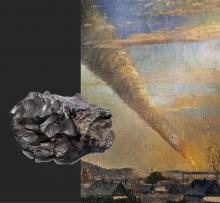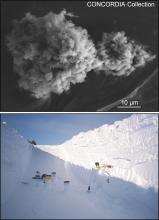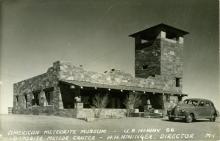Listen to today's episode of StarDate on the web the same day it airs in high-quality streaming audio without any extra ads or announcements. Choose a $8 one-month pass, or listen every day for a year for just $30.
You are here
Unexpected Visitor
An unexpected visitor dropped in on a Japanese city on January 7th of 1996: a space rock. It blazed across eastern Japan, forming a bright streak in the late-afternoon sky. It also created a sonic boom loud enough to rattle doors and dishes and send residents outside to see what was going on.
At an altitude of about 15 miles, the rock exploded. Some of the debris formed a white cloud in the sky. But small rocky fragments splashed across hundreds of square miles. One of them even punched a hole in the roof of a car-repair business in the city of Tsukuba.
Meteorite hunters fanned out across the countryside to look for those fragments. They found less than two pounds of them. The largest weighed just a few ounces. Together, they were called the Tsukuba meteorite.
Some pieces were found quickly, so scientists began taking a look at them just hours after they fell to Earth.
The scientists concluded that the original rock was a member of the most common class of meteorites. It consisted of small blobs of rock that melted, then cooled and solidified, when the solar system was quite young. Those blobs were cemented together by bits of rock and metal, with a high amount of iron.
The original rock was blasted off the surface of a larger space rock. The chip orbited the Sun for millions of years before it ran into Earth — creating an amazing lightshow over Japan 25 years ago today.
Script by Damond Benningfield






